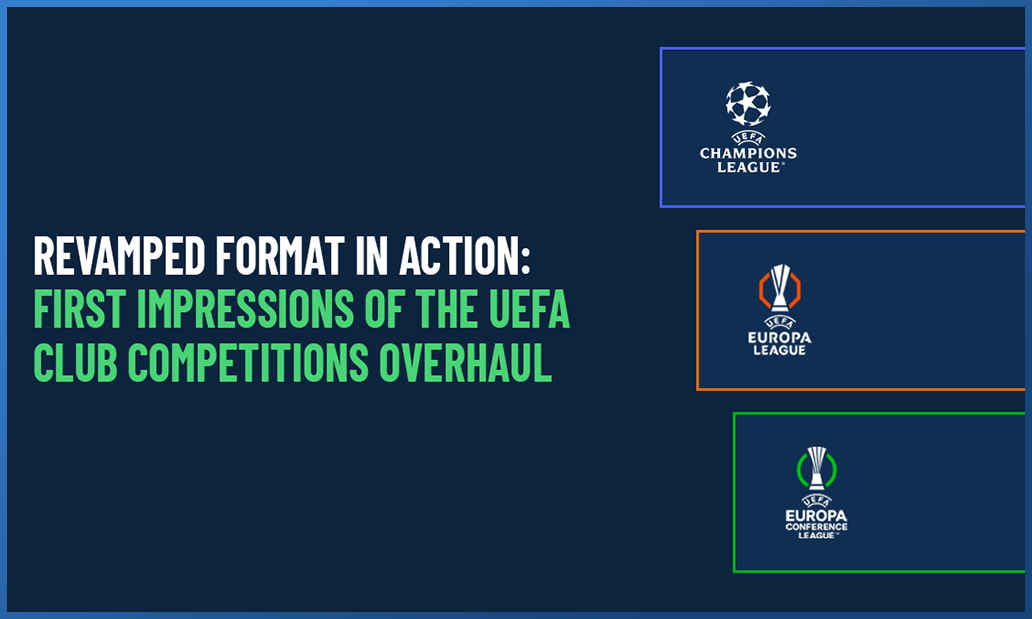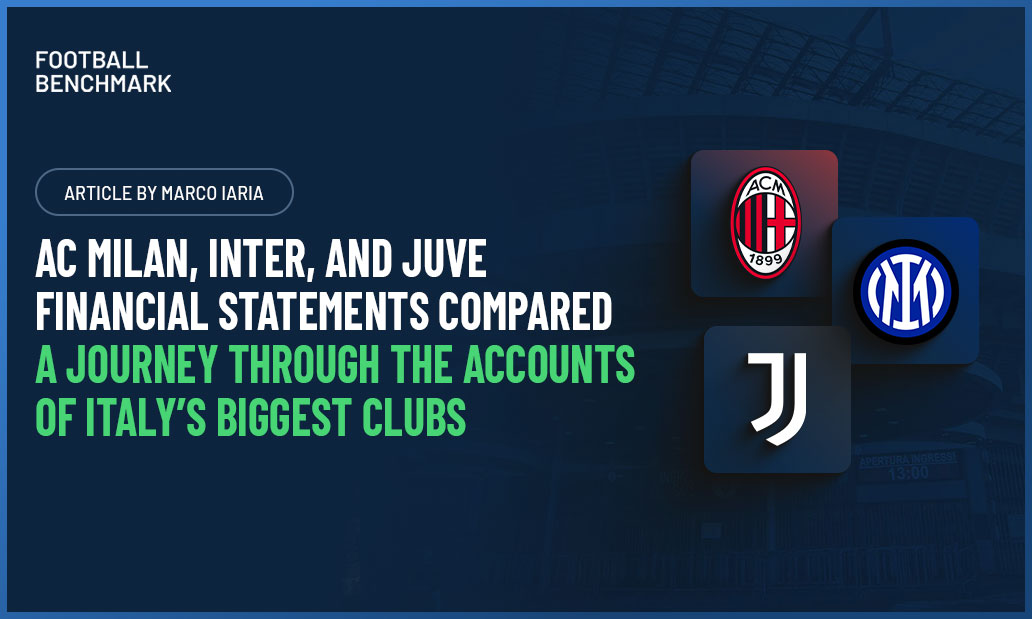
Key insights
- Record diversity, but limited openness at the top: With 40 nations represented and 15 debutants, the revamped UEFA Club Competitions have taken a positive step towards inclusivity. However, most newcomers are in the UEFA Conference League, leaving the UEFA Champions League and UEFA Europa League dominated by traditional powerhouses.
- Early signs of unpredictability: Initial league stage results brought unexpected outcomes, with some clubs seemingly struggling to adapt to the new format and its demanding fixtures. Yet, the list of clubs that will likely face direct elimination after the conclusion of this initial stage seems to be even more predictable than before.
- Significant revenue growth: Annual revenues have risen to EUR 4.4 billion in the new cycle, driven by an increase of unique matches and higher-quality fixtures. While participating and non-participating clubs all benefit, the financial gap between the UEFA Champions League and other competitions remains substantial.
As the UEFA Champions League (UCL), UEFA Europa League (UEL), and UEFA Conference League (UECL) league stages approach their final phases - 75% completed for the UCL and UEL, and after today, 100% for the UECL - the impact of the revamped competition format is beginning to emerge. With the UECL league stage concluded and the winter break nearing for the UCL and UEL, this is an opportune moment to reflect on early takeaways and assess fit with the pre-envisioned objectives. The new format aims to increase sporting stakes, unpredictability, high-profile clashes, and inclusivity.
This article revisits expectations, examines emerging trends, and evaluates how clubs are navigating the transition to the new competition format. Additionally, it assesses the financial implications and how these changes are shaping the future of European football.
A more open and diverse competition?
The overhaul of UEFA's club competitions has expanded participation in the league (formerly group) stage to 108 teams, up from 96 in the previous cycle. This has brought record-breaking geographical diversity, with 40 nations represented, surpassing the previous high of 36. Notably, clubs from Northern Ireland and Wales have reached this stage for the first time, marking a milestone for European football inclusivity.
However, this increased accessibility is primarily seen in the UECL, which accounts for 12 of the 15 debutants. While this provides smaller clubs a platform on the European stage, the UCL remains dominated by clubs from the "Big Five" leagues. The three new UCL entrants - Girona FC, Bologna FC 1909, and Stade Brestois 29 - all hail from these elite leagues, underscoring that the expanded format hasn't significantly diversified the competition at the highest level, at least for now.
Diversity has also increased in terms of matchups. The guarantee of eight different opponents for each team and the expanded number of clubs have tripled the number of unique fixtures in the UCL and UEL, from 48 to 144. This variety enhances the fan experience and offers clubs more opportunities to compete in a diverse environment, bolstering the competitions' appeal.
A more unpredictable competition?
UEFA Champions League
With the caveat of looking at an ongoing competition, the new Swiss format has so far introduced greater match-to-match unpredictability. Previously, aggregate squad market value was a strong predictor of group stage outcomes. Last season, 13 of the 16 advancing teams (81%) were among those with the highest squad values in their respective groups.
This season tells a more nuanced story, especially in the top eight positions of the table. Only four of the top eight clubs by squad market value - Liverpool FC (EUR 997M), Arsenal FC (EUR 1.19B), FC Barcelona (EUR 1.01B), and Bayer 04 Leverkusen (EUR 789M) - occupy “expected” spots. Giants like Real Madrid CF (EUR 1.37B, highest squad value overall), Manchester City FC (EUR 1.23B, second highest) and Paris Saint-Germain FC (EUR 1.03B, fourth highest) are underperforming. This contrasts sharply with teams like Stade Brestois 29 (EUR 146M, ranked only 30th by squad value) and LOSC Lille (EUR 260M, ranked 24th by squad value), who have exceeded expectations so far.
Yet, unpredictability diminishes at the bottom. Nine of the twelve least valuable squads are positioned below the top 24, while only two of the top 18 squads face direct elimination at the moment (including Paris Saint-Germain FC barely below the 24th spot).
A closer look reveals more subtle trends: 22 of the 36 clubs are performing exactly as expected based on squad value, falling within their predicted “tiers” - whether it being top eight, mid-range (9-24), or bottom (25+) tier. Only two clubs have notably disrupted this pattern by climbing or sliding two “tiers” compared to expectations: Stade Brestois 29 and Paris Saint-Germain FC.
In summary, while the fight for automatic qualification to the top 16 brings intriguing and unexpected twists on a week-to-week basis, squad value remains a strong predictor of overall success, particularly at the lower positions of the league table. The takeaways deliver a clear message: while there is greater variety at the top of the table, the overall qualification landscape remains largely unchanged. This balance between predictability and occasional disruption reflects broader trends in football. Financial strength continues to be a decisive factor in on-pitch performance, while competition organizers are incentivized to structure formats that maximize matches for high-profile clubs while maintaining a limited, but enticing possibility for underdog success stories.
UEFA Europa League
The Europa League has also seen unexpected results. None of the five most valuable squads are in the current top six, and only 15 of the 36 clubs sit within five places of their squad market value rankings. Clubs like RSC Anderlecht (17th in value, 3rd in the table) and FCSB (32nd in value, 10th in the table) have significantly outperformed expectations.
Conversely, seven teams have seen significant drops of 10 or more places, underlining how even the wealthiest clubs can struggle in this format. High-profile teams such as Manchester United FC (EUR 960M, 7th in the table) and Tottenham Hotspur FC (EUR 822M, 9th) are underperforming, highlighting the possibility for volatility in an environment that rewards consistency rather than potential.
UEFA Conference League
The format of the UEFA Conference League (UECL) is similar to both the UCL and UEL, however each team plays only six matches, facing one opponent from each of the six pre-allocated pots. With only six matchdays, the format can result in even more variance, increasing the importance of every single match, leaving less room for errors and creating a more compact table.
A more lucrative competition?
The total gross revenues from UEFA Club Competitions (UCCs) have increased by more than 25% compared to the previous cycle, rising from EUR 3.5 billion to EUR 4.4 billion. This growth is largely attributed to a greater number of matches, an increase in unique fixtures, and a higher frequency of top-tier clashes, all of which have driven up commercial and broadcasting income. The revenue boost has enabled UEFA to significantly enhance its solidarity funds. Notably, payments to non-participating clubs have grown by 76% compared to the previous cycle. When combined with distributions to clubs eliminated during the qualifying rounds and contributions to the UEFA Women’s Champions League and the UEFA Youth League, total solidarity funds now amount to EUR 465 million.
The net prize money distributed among league stage participants is calculated by deducting solidarity payments, contributions to other UEFA competitions, and UEFA’s share from the total gross revenue. Of this net figure, 74.4% is allocated to UCL clubs, 17.0% to UEL clubs, and 8.6% to UECL clubs. These allocations highlight the substantial financial disparity between the UCL and the other two competitions, as the combined share of the UEL and UECL amounts to roughly one-third of the UCL’s total distribution.
The financial distribution system has also been restructured to align with the new format, placing greater emphasis on on-pitch performance. Under the previous revenue distribution framework, funds were allocated into four categories: 25% as participation fees, 30% based on performance, another 30% determined by a club's 10-year coefficient ranking, and the remaining 15% distributed through a 'market pool,' influenced by the value of domestic TV rights in each club's market.
This season, the allocation is structured as follows: 27.5% is reserved for equal distribution among all 36 clubs (starting fees), marking a slight increase, while 37.5% is allocated based on performance - a notable enhancement. The remaining 35% is distributed through a newly introduced 'value pillar,' which accounts for the value of broadcasting rights in a club's home country and the club’s UEFA coefficient ranking. Although the increased emphasis on performance and equal distribution reduces the system’s reliance on past results and overall popularity, the financial advantages still disproportionately favor the larger, more established clubs.
Still, qualification for any UCC, particularly the UCL, offers a significant advantage over non-participants. In terms of starting fees alone, each UCL participant now receives approximately EUR 18.6 million, an increase from EUR 15.6 million in the previous cycle. Meanwhile, clubs in the UEL and UECL receive EUR 4.1 million and EUR 3.2 million, respectively. These amounts are further augmented by the other two pillars, with the 'value’ pillar estimated to provide each UCL club with at least EUR 2 million, regardless of their final position.
Will the changes deliver industry-wide satisfaction and long-term success?
From certain perspectives, it can already be argued that the new format introduces more diversity, unpredictability, and financial reward to European football. However, the status quo at the top levels remains largely intact, particularly in the most critical areas. The true test of unpredictability will likely come later, in the first knockout rounds.
The reception of the new format has been similarly mixed so far. Some fan and media voices argue that this season has already brought more intrigue and excitement than any previous group stage, with the diversity of matches also receiving positive feedback from various stakeholders. However, challenges such as player workload, the growing gap between top and "lower-tier" clubs, and rising consumer prices continue to generate criticism around the premises of the competition model. With the emergence of new competition proposals, notably the revamped European Super League, or "Unify League," the design of competition models is under increasing scrutiny. The next few years will ultimately reveal whether the new UCC format addresses the key challenges within the ecosystem or if alternative models will need to be explored.
Enjoyed this content? Dive deeper into the latest market value estimates for over 10,000 players across more than 480 top clubs from Europe, the Americas, and the Middle East. Explore it now - click here to get started!




